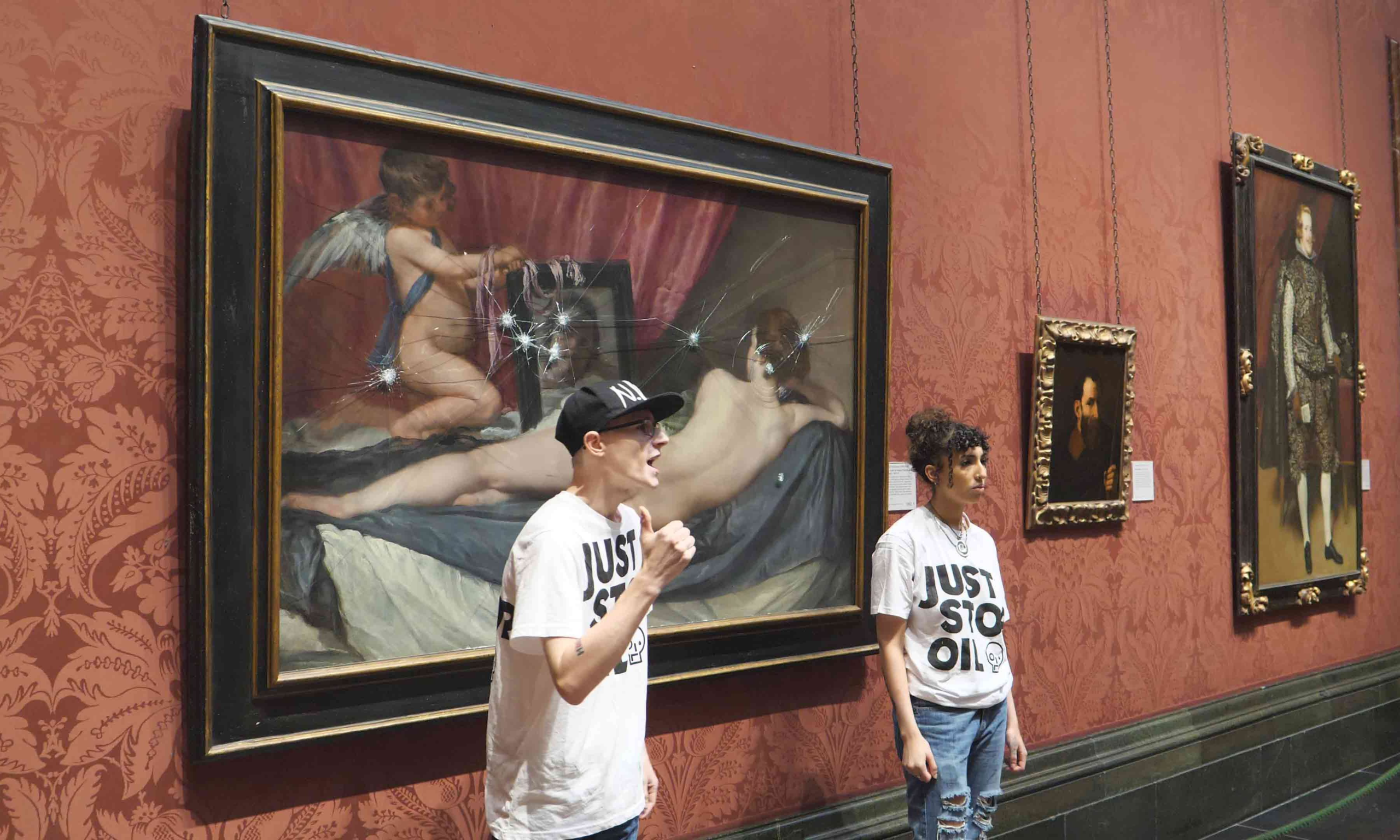Just Stop Oil protestors attacked Diego Velázquez’s The Toilet of Venus, also known as “The Rokeby Venus”, at London's National Gallery in November 2023
Photo: Just Stop Oil
“Are you ready?” the curator said to a group of us huddled around a plastic crate covered by a tea towel. We nodded, and as he pulled back the tea towel, we saw Margaret Thatcher’s decapitated head staring back at us, eyes pale and slightly crazed. Beside us was the rest of her in marble form, as a full-length statue by the sculptor Neil Simmons. Her handbag was still neatly clasped to her waist, but the break at her neck was as clean as a guillotine’s chop.
It was 2002, and I had just started working for the late Labour MP Tony Banks, then in charge of the House of Commons Works of Art Committee. The statue had been commissioned to stand in the Members’ Lobby, just outside the House of Commons. But because Thatcher was still alive, the committee wanted to loan the statue to the Guildhall Art Gallery until the day came when Parliament could suitably memorialise her in death, rather than be seen to lionise her in life. And it was at the Guildhall where, shortly after Simmons’s work had been unveiled by Thatcher herself, the statue was attacked by a protester with a cricket bat.
Our job, as we huddled around Thatcher’s severed head, was to wonder what to do next. In a statement, Banks said that while the statue ranked “among our most controversial commissions, acts of vandalism against works of art can never be tolerated in a civilised society”. I remember he felt this genuinely, even though he had been among Thatcher’s most effective and fervent Parliamentary critics. He recognised that allowing art, especially public art, to become a target of protest was always a thin-end-of-the-wedge moment.
Then the discussion turned to whether we should repair the statue. Practically, it looked possible, but politically it was another matter. Could the House of Commons really commemorate Thatcher with a statue that had once been decapitated? If it did, then the protester would be commemorated too, for the nature of his attack meant that art and act would forever be associated. And no matter how well the head was reattached, over time the join would become visible.
So it was decided that the statue could no longer go into parliament. A new statue, this time in bronze, was commissioned from Antony Dufort, and is now in the Members’ Lobby. Simmons’s (repaired) marble statue is still at the Guildhall, parked in a corridor.
More than 20 years on, I wonder what Thatcher’s metaphorical executioner achieved. Is anybody more aware of Thatcher’s controversial legacy? Did those affected by her policies have their lives improved? I doubt it. What might have felt, for a brief moment, like a radical, daring act, will be remembered for what it was: a pointless act of cultural violence.
Those who excuse such attacks point out that art and protest have long gone together, as if one iconoclasm justifies another. It must be tempting, if you support a protester’s cause, to support their protest too. We have seen this with Just Stop Oil’s pretend attacks in the Louvre, National Gallery and elsewhere. “Surely, the planet is more important than art,” they say. And it is. If you could prove to me that climate change, or war in the Middle East, could be stopped by destroying a painting, I would throw the soup myself. But, as Tony Banks recognised, when looking at the severed head of his greatest political opponent, destroying art achieves nothing.

